#ebony spleenwort
Text



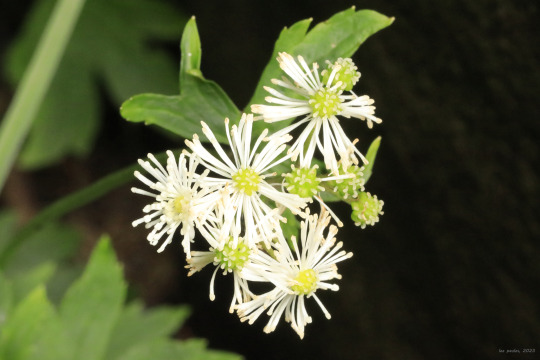

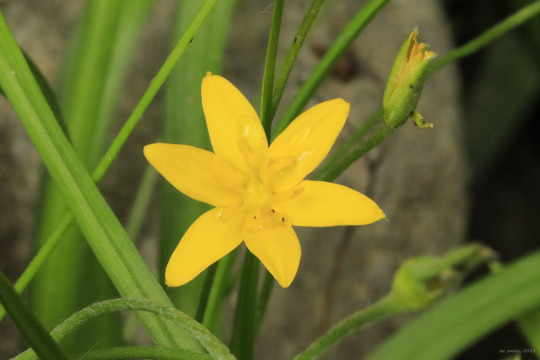



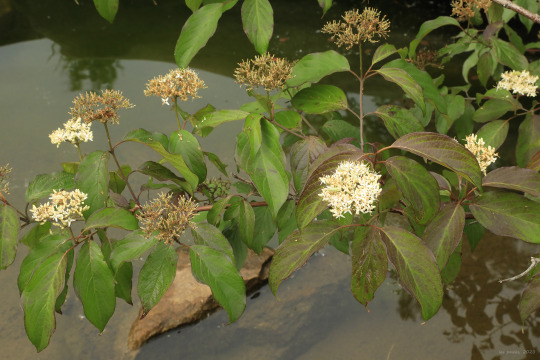
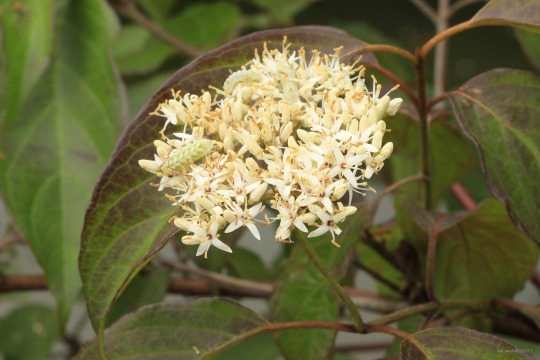
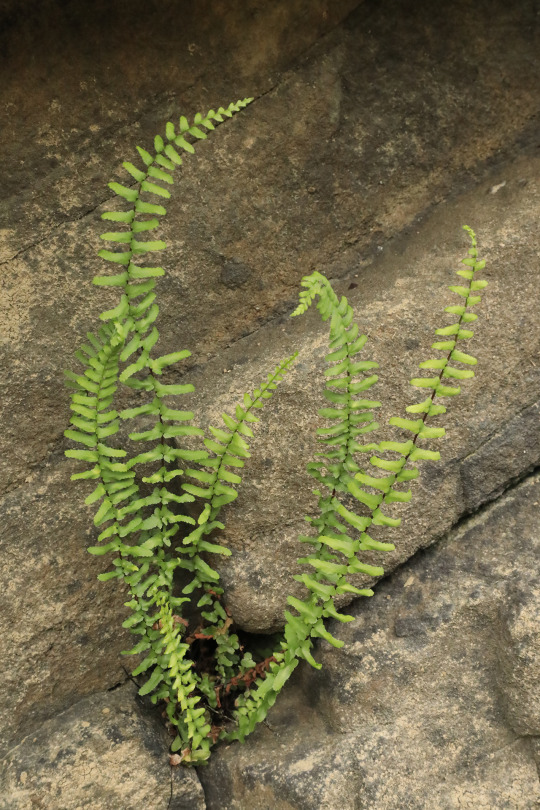

Where it narrows and plummets through a steep gorge at Valley Falls State Park, the Tygart Valley River has broken the Connoquenessing sandstone through which it passes into massive, jumbled slabs. In the margins of these wrecked pillars, where sediment and fine sand wash out, a great diversity of life has sprung up. The river is both destroyer and creator, more powerful and relentless than any god man has dreamed up.
From top: royal fern (Osmunda regalis var. spectabilis), a water-loving beauty that clumps in the nooks between the boulders; the elegant tassel rue (Trauvetteria carolinensis), with its sharply-lobed, palmate leaves; yellow star grass (Hypoxis hirsuta), whose six-petaled flowers and delicate, grass-like leaves are quite attractive; American water willow (Justicia americana), whose creeping rhizomes allow the plant to form extensive colonies at the edges of streams and rivers; silky dogwood (Cornus amomum), a thicket-forming wetlands lover; and ebony spleenwort (Asplenium platyneuron), easily identified by its brown stem.
#appalachia#west virginia#vandalia#flora#wildflowers#valley falls state park#tygart valley river#connoquenessing sandstone#pottsville formation#rapids#waterfalls#royal fern#tassel rue#yellow star grass#common goldstar#american water willow#silky dogwood#ebony spleenwort#early summer
82 notes
·
View notes
Text
First jar terrarium
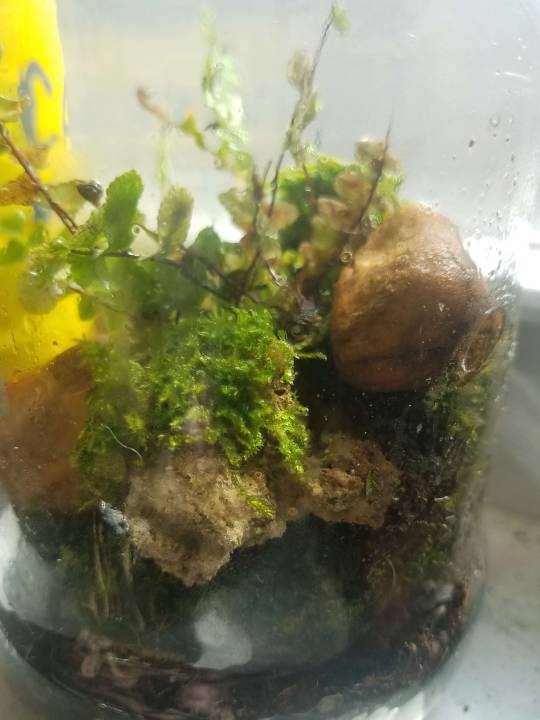
Made with stuff around our home. I'm hoping to find and add a few isopods.
#moss#terrarium#terrarium jar#mini terrarium#moss jar#bearded lichen#ebony spleenwort#lichen#plants#fern
2 notes
·
View notes
Text

Ebony Spleenwort (asplenium platyneuron) is a north american native fern that is drought tolerant. The plant prefers rock sheltered/shaded roots. I found this growing in a rock wall when I moved in, and have watched it spread slowly. This year I have been pulling the less thriving patches from higher/sunnier on the wall, potting them in the shade to let them grow a bit, and re-planting them in good locations along the base of the wall. This isnt a commercially viable plant due to the small rhizome, and I've had a bit of trial and error figuring out how to transplant these. Hopefully I will have a legit fern wall in the next few years.

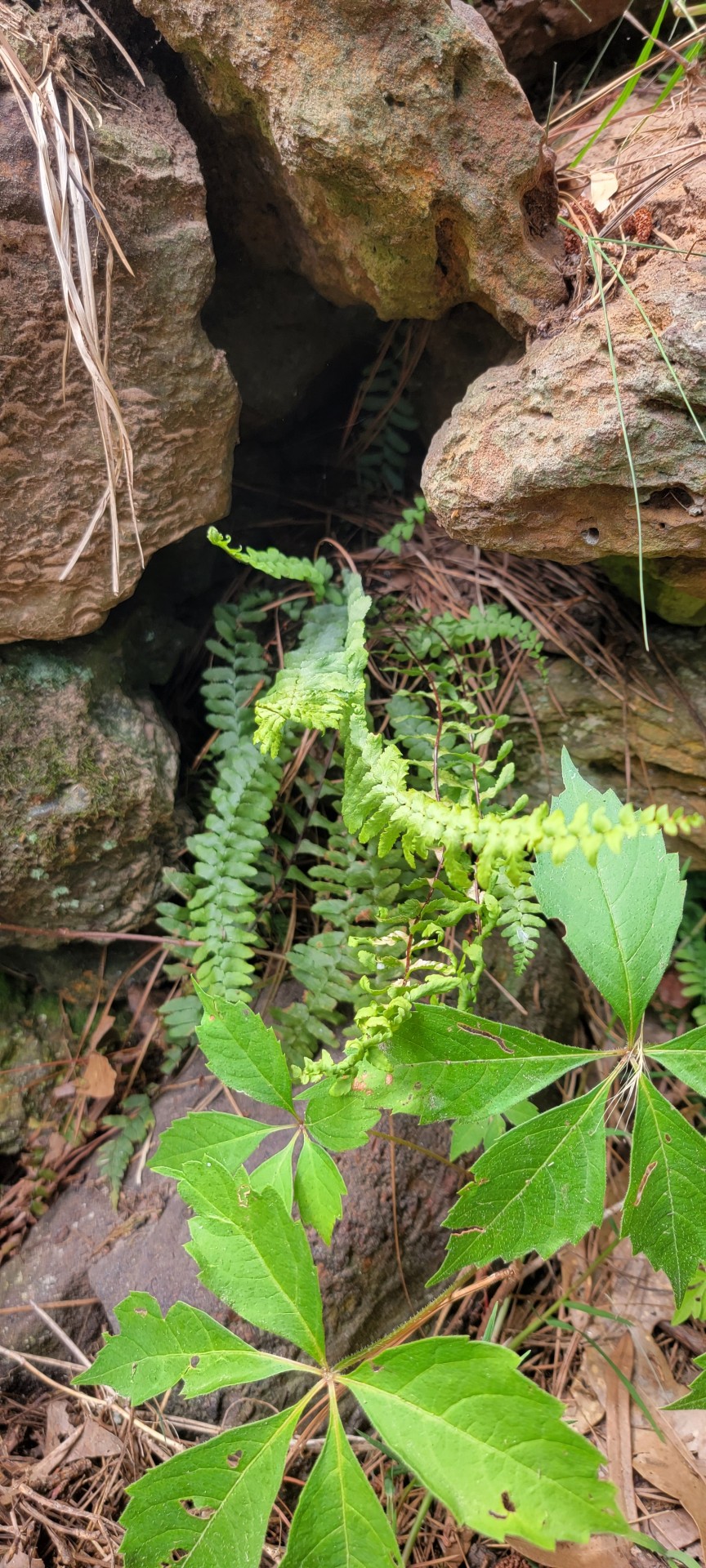


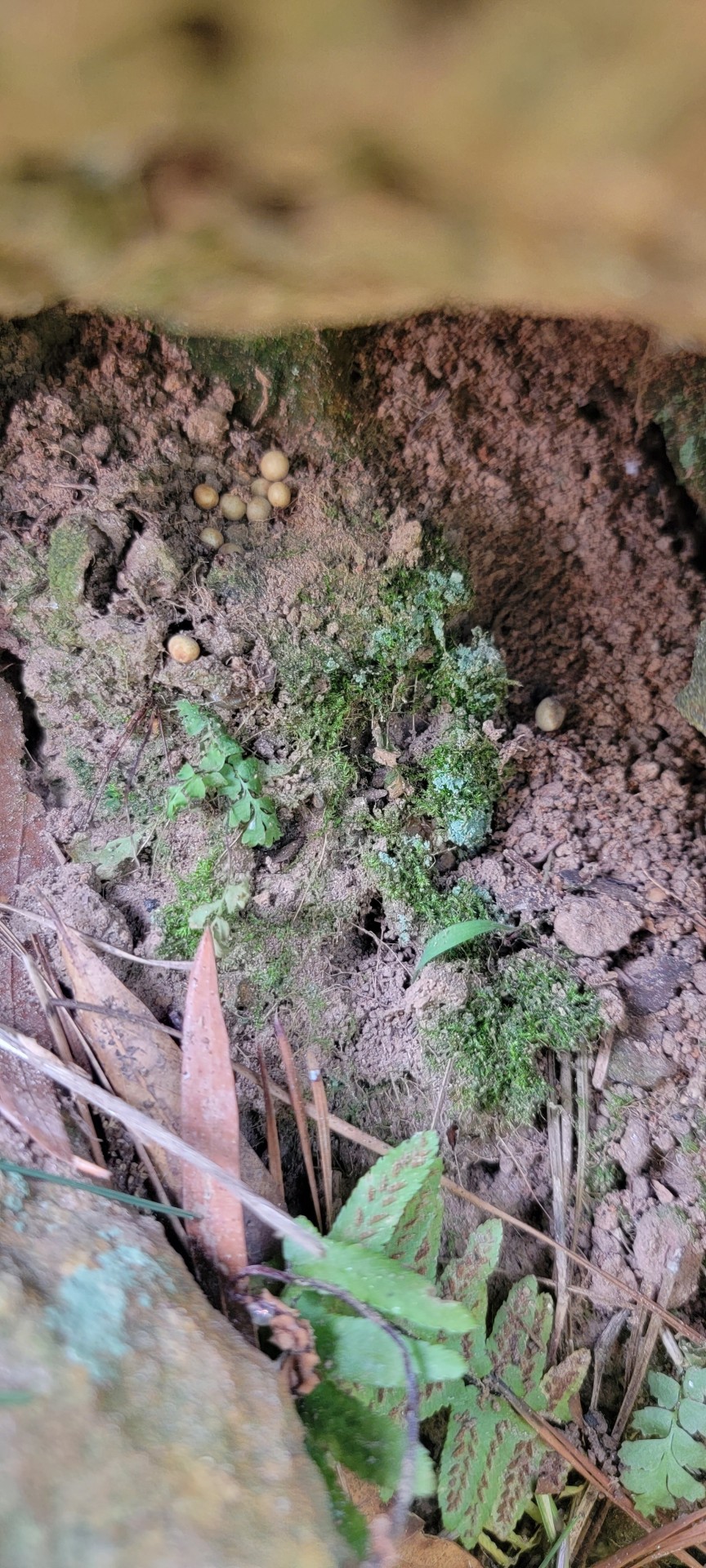
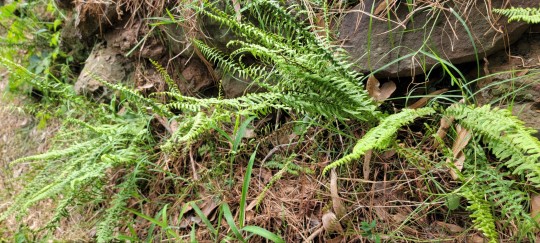

7 notes
·
View notes
Text
Terms derived from wort
adder's wort (Bistorta officinalis)
adderwort (Bistorta officinalis)
asterwort (Asteraceae spp.)
awlwort (Subularia aquatica)
banewort
barrenwort (Epimedium alpinum)
bearwort (Meum athamanticum)
bellwort
birthwort
bishop's-wort (Stachys officinalis)
bitterwort
bladderwort
blawort
bloodwort
blue throatwort
blushwort
bogwort
boragewort
bridewort
brimstonewort
brotherwort
brownwort
bruisewort
bugwort
bullwort
burstwort
butterwort
cancerwort (Kickxia spp.)
catwort
clown's ringwort
colewort
common ragwort
coralwort
crosswort
damewort
danewort
dragonwort
dragon's wort
dropwort*
dungwort
earwort*
ebony spleenwort (Asplenium platyneuron)
elderwort
European pillwort
fanwort
felonwort
feltwort
felwort
24 notes
·
View notes
Photo


Ebony spleenwort appreciation post
2 notes
·
View notes
Text
Husband hasn't weedwhacked around the shade garden lately, and I noticed a wild fern growing just outside the plastic edging by the hostas so I thought I should move it a bit, to a more protected area where there are two other wild ferns growing
and I try to look up "how to transplant wild fern"
and get a website that says DON'T because it could be ILLEGAL (if it's a protected species--it's not, it's an ebony spleenwort) and you might not have PERMISSION from the LAND OWNER (hi, it's in my backyard already) and even if it's not and you do there's NO GUARANTEE you'll be able to recreate the PRECISE ENVIRONMENT it was GROWING IN (I'm moving it less than a meter, to a spot near two other volunteer ebony spleenworts)
So yes I was outside at dusk digging up a fern with a tablespoon because I can't find my trowel. Neighborcat Macy watched from a distance.
23 notes
·
View notes
Photo

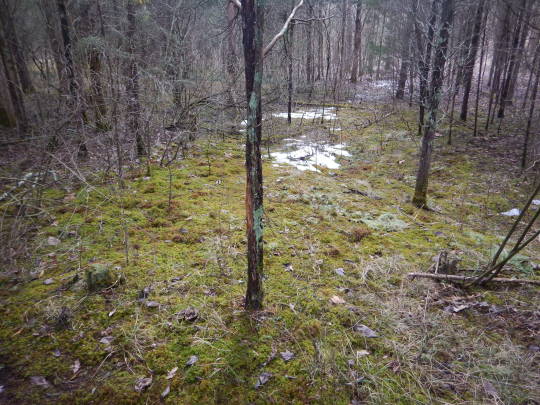


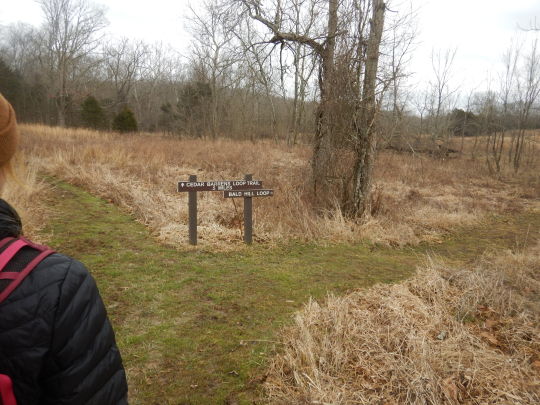
from @bloodfleurs and our jaunt trapsin some good prairie complex at Chaparral Prairie.
The Cedar Barrens Loop Trail, mid summer and mid May seem to be the best time to visit these sites but the lushness of a nice cedar glade during winter is fantastic.
A cedar barren is a semi xeric prairie like opening with shallow to exposed substrate that is surrounded by eastern red cedar, oaks, dwarf hackberry, kentucky coffee tree, osage orange, virginia pine, white cedar, short needle pine, ridgid pine, and other sub shrub/understory/midstory species. For the most part, many of these species are never found directly all at the same time. Each cedar barren will have a different forest make up with species from these lists missing or species more abundantly present than others, or species mentioned missing. In sections where cedar thickets are more present than other tree species around the cedar barrens and water seepage prevents forms of fire breaks in many cases, we call these cedar glades; these tend to be a lush and damp, dense shade species rich ecosystem of: terrestrial moss species, ebony spleenworts, and running ground cedar and not much else. Comparing organic horizons between cedar forrests to see the depth of organic matter will help identify these sections as a true red cedar thicket or an encroachment of red cedar on what was extremely productive, forbe and grass rich, barren. Acidic duff(new shed) is often shallow on the surface caused by aborted awls that fall to the ground from canopy closure among the cedars. Cedars in exposed areas away from these little seep islands will usually torch and not survive since they are very fire prone and easily catch; this is why, in the barren proper we don't seem to see eastern red cedar often, if we do, we see young individuals that haven’t caught on fire yet.
If a barren that has been subject to fire suppression to long is found, many times the adjacent cedars are encroaching on the opening and are often cut down and back to the section of forest where natural fire breaks can be identified by running water, average field capacity monitoring of water saturation, species present, and other signs. If you watch grow deer tv on youtube or have been part of the volunteer process for any of the state barrens and glades or TNC(the nature conservancy sites) the methods for removal are often variable. Many practice a chop drop and stack method, never bringing in heavy equipment that could compact the soil or bring in weeds. Once piles are manageable, they allow them to be seasoned for a bit prior to setting up a controlled burn. The piles are often stacked around stumps in the barrens where etiolation barriers were present at one point. Fire lines and site training protocol for rx burns are done and so are mock site situations prior to the scheduled burn date range, if conditions are right during that range they clear fuel load by burning which encourages light penetration on the site and helps dormant seeds germinate.
Many seeds can remain dormant for long periods of time before germinating, some even require denaturing of the seed coat, fire scarification, or smoke scarification to promote more germination. Besides thickened insulating bark, several other mechanisms for fire adaptivity in woody plants are present; the two main forms seen often are rhizome regrowth or basal regrowth. Basal regrowth is very cool and is often explained through lignotubers(large underground storage sections that often resemble sunken caudex or basal burl and are a part of the root crown/flare system in many fire adapted species, these lignotubers have energy reserves for fast regrowth mechanisms and are heavily associated with fire) and epicormic buds(dormant adventitious buds that respond to chemical signaling factors in the plant caused by the plants response to external or internal rapid change.) along these sunken fire adapted crowns. If you also study eastern woody species, you’ll notice that there is a somewhat consistent overlap with ring porus trees and fire adapted ecosystems, though, this is just something that may overlap and correlation won’t tell you about causation in full neither will causation be directly associated to correlation; in other words, no one has enough data on this concept for it to mean anything yet and it could have nothing to do with fire adaptability but more to do with weather patters. Trees in the north tend to be more ring diffuse woody species.
20 notes
·
View notes
Photo

Snagged ebony spleenwort and moss from Dog Skull yesterday and now I have captured them in a jar. https://www.instagram.com/p/CBYX5BCpUPH/?igshid=120fns1oknxft
13 notes
·
View notes
Text
Herbs and Their Witchy Names

original graphic by: LorelainW
One of the things you might notice when working with spells is they call for some different ingredients. For example, eye of newt, wool of bat, toe of frog. To some who happen across these spells it can help lend to some of the fear surrounding witches because some of the ingredients may seem a bit bizarre. However, you will often find that seldom will those ingredients be literal. For example, if you see eye of newt in a spell, you are not going go out and get an actual eye from a newt. It actually refers to mustard seed.
The reason we have these names, stems from ancient times when it was not safe to keep spells about. So to protect the craft these names would be used instead. Some of them are just Old English, and some even date back to ancient China. A lot of times, you will find that the name is based on what the herb resembles. You will also find that many witches still use these names to this day. The more you work with magick and spell work the more familiar with these names you will become. I wanted to provide you with a basic list that you can use to work with as you are becoming familiar with working with them. As you find more you can add more to it.
A Bone of an Ibis: Buckthorn
A Titan’s Blood: Wild Lettuce
A Lion’s Hairs: Tongue of a Turnip (the leaves of the taproot)
A Man’s Bile: Turnip Sap
A Pig’s Tail: Leopard’s Bane
A Hawk’s Heart: Heart of Wormwood
Aaron’s Rod: Goldenrod, Mullein
Absinthe: Wormwood
Achillea: yarrow
Adders Tongue: Dogstooth Violet
African Ginger: Ginger
Aftator Pear: Avocado
All Heal: Mistletoe, Valerian
American Dittany: Basil
Aneton: Dill
An Eagle: Wild Garlic
Aquifolius – Holly
Archangel – Angelica
Armstrong – Knotweed
Arrowroot – Yarrow
Assear: Comfrey
Ass’s Foot or Bull’s Foot: Coltsfoot
Ava – Kava Kava
Bad Man’s Plaything: Yarrow
Bairnwort – Daisy
Bat’s Wings: Holly
Battree – Elder
Bear’s Foot: Lady’s Mantle
Bee Balm – Lemon Balm
Beer Flower – Hops
Beggar’s Buttons – Burdock
Beggarweed – Dodder
Bereza – Birch
Bindweed – Morning Glory
Bird’s Eye – Pansy, Germander
Bird’s Foot – Feunugreek
Bird’s Nest – Carrot
Biscuits – Tomentil
Bitter Greass – Ague Root
Bitter Root – Gentian
Black Cherry – Belladonna
Black Maidenhair: Black Spleenwort
Black Sampson: Echinacea
Black Wort – Comfrey
Blessed Herb – Avens, Pimpernel
Blind Buff – Poppy
Blood: Elder sap or another tree sap
Blood of Hephaistos: Wormwood
Blood from a Head – Lupine
Blue Buttons – Periwinkle
Blue Eyes – Potato
Blood of Ares: Purslane
Blood of a Goose: Mulberry Tree’s Milk
Bloodwort: Yarrow
Blood of Hestia: Chamomile
Blood of an Eye: Tamarisk Gall
Blood from a Shoulder: Bear’s Breach
Bottle Brush: Horse Tail
Brain Thief: Mandrake
Bread and Cheese Tree – Hawthorne
Bride of the Meadow – Meadowsweet
Bride of the Sun: Marigold
Braisewort – Comfrey, Daisy
Bull’s Blood or Seed of Horus: Horehound
Burning Bush: White Dittany
Calendula: Marigold
Calf’s Snout: Snapdragon
Cankerwort: Dandelion, Ragwort
Candlemas Maiden: Snowdrop
Candlewick Plant: Mullein
Cape Gum: Acacia
Capon’s Tail: Valerian
Carpenter’s Weed: Yarrow
Catmint: Catnip
Cat’s Foot: Canada Snake Root and/or Ground Ivy
Cat’s Wort: Catnip
Cheeses: Marsh Mallow
Cherry Pie: Heliotrope
Chewing John: Glangal
China Root: Galangal
Chinese Parsley: Coriander
Chocolate: Carob
Chocolate Flower: Wild Geranium
Christ’s Eye: Vervain Sage
Christ’s Ladder: Centaury
Christ’s Thorn: Holly
Church Steeple: Agrimony
Clear-eye: Clary Sage
Click: Goosegrass
Clot: Great Mullein
Clove Root: Avens
Corpse Plant: Indian Pipe
Couch Grass: Witch’s Grass
Cowgrass: Knotweed
Crowdy Kit: Figwort
Crow Corn: Ague Root
Crow’s Foot: Cranesbill
Crown for a King: Wormwood
Crown of Thorns: Euphorbia
Cuckoo’s Bread: Common Planatin
Cuddy’s Lungs: Great Mullein
Cucumber Tree: Magnolia
Cupids Car: Wolf’s Bane
Daphne: Bay Laurel
Death Angel: Agaric
Death Flower: Yarrow
Death’s Herb: Belladonna
Delight of the Eye: Rowan
Devil’ Apple – Datura
Devil’s Cherries: Belladonna
Devils Dung: Asafoetida
Devil’s’ Eye: Henbane, Periwinkle
Devil’s Flower: Bachelor’s Buttons
Devil’s Plaything: Yarrow
Dew of the Sea: Rosemary
Dog’s Mouth: Snap Dragon
Dollar: Meadowsweet
Dove’s Foot: Wild Geranium
Dragon’s Blood: Calamus
Dragon Wort: Bistort
Dumbledore’s Delight: Wolf’s Bane
Earth Smoke: Fumitory
Elf Leaf: Lavender, Rosemary
Elf’s Wort: Elecampane
Enchanter’s Plant: Vervain
English Cowslip: Primrose
Englishman’s Foot: Common Plantain
Erba Santa Maria: Spearmint
Everlasting Friendship: Goosegrass
Eye Balm: Goldenseal
Eye of Christ: Germander Speedwell
Eye of the Day: Common Daisy
Eye of Newt: Mustard Seed
Eye of the Star: Horehound
Eye Root: Goldenseal
Eyes: Aster, Daisy, Eyebright
Fairies Horses: Ragwort
Fair Lady: Belladonna
Fairy Bells: Sorrell, Wood
Fairy Cup: Cow Slip
Fairy Fingers: Foxglove
Fairy Smoke: Indian Pipe
Fairy Petticoats: Foxglove
Fairy Weed: Foxglove
False Wintergreen: Pipsissewa
Fat from a Head: Spurge
Felon Herb: Mugwort
Field Hops: Yarrow
Five Fingers: Cinquefoil
Flute Plant: Meadow Rue
Folk’s Gloves: Foxglove
Fox Bells: Foxglove
Foxtail: Club Moss
French Wheat: Buckwheat
Frog’s Foot: Bulbous Buttercup
From the Belly: Earth-apple
From the Foot: Houseleek
From the Loins: Chamomile
Frozen Roses: Wood Rose
Fruit of the Gods: Apple
Fruit of the Underworld: Apple
Gagroot: Lobelia
Gallowsgrass: Hemp
Garden Heliotrope: Valerian
Ghost Flower: Datura
Gillies: Carnation
Gin Plant: Juniper
Giver of Life: Corn
Goat’s Foot: Ash Weed
Goat’s Leaf: Honeysuckle
Goat’s Weed: St John’s Wort
God’s Hair: Hart’s Tongue Fern
Golden Bough: Mistletoe
Golden Star: Avens
Goldes: Marigold
Gosling Wing: Goosegrass
Graveyard Dust: Mullein
Graveeyard Flowers: Plumeria
Ground Apple: Chamomile
Ground Raspberry: Golden Seal
Great Ox-eye: Ox-eye Daisy
Hairs of a Hamadryas Baboon: Dill Seed
Hair of Venus: Maidenhair Fern
Hag’s Taper: Great Mullein
Hagthorn: Hawthorn
Happy Major: Burdock
Harebell: Bluebell
Hare’s Beard: Great Mullein
Headache: Poppy
Healing Herb: Comfrey
Helmet Flower: Scullcap
Herb of Enchantment: Vervain
Herb of Grace: Rue, Vervain
Hind’s Tongue: Hart’s Tongue Fern
Holy Herb: Yerba Santa
Holy Rope: Hemp Agrimony
Honey Stalks: Clove
Hook and Arn: Yerba Santa
Horse Tongue: Hart’s Tongue Fern
Horse Hoof: Coltsfoot
Horse Violet: Pansy
Hundred Eyes: Periwinkle
Hundred Leaved Grass
Indian Dye: Golden Seal
Indian God Tree: Banyon
Indian Paint: Golden Seal
Indian Root: Trillium
Indian Sage – Bonesset
Indian Tobacco – Lobelia
Innocense: Bluets
Jacob’s Ladder – Lily of the Valley
Jacob’s Staff: Great Mullein
Jaundice R
Joy of the Mountain: Marjoram
Joy on the Ground: Periwinkle
Jupiter’s Staff: Great Mullein
Juno’s Tears – Vervain
King’s Crown: Black Haw
Knight’s Milfoil: Yarrow
Klamath Weed – St Johns Wort
Knight’s Milfoil – Yarrow
Knitback – Comfrey
Kronos’ Blood: sap of Cedar
Ladder to Heaven – Lily of the Valley
Lady’s Glove: Foxglove
Lady’s Meat: Hawthorn
Lad’s Love: Southernwood
Lamb’s Ears: Betony
Lamb Mint: Spearmint
Lion’s Herb: Columbine
Lion’s Mouth: Foxglove
Lion’s Tooth: Dandelion
Little Dragon: Tarragon
Love Fruit: Orange
Love Herbs: Lovage
Love Idol: Pansy
Love in Idleness: Pansy
Love Leaves: Burdock
Love Lies Bleeding: Amaranth/Anemone
Love Man: Goosegrass
Love Parsley: Lovage
Love Root: Orris Root
Mackeral Mint: Spearmint
Maiden’s Ruin: Southernwood
Man’s Health: Ginseng
Master of the Woods: Woodruff
May: Black Haw
May Lily: Lily of the Valley
May Rose: Black Haw
Mayflower: Hawthorne
Maypops: Passion Flower
Military Herb: Yarrow
Miracle Herb: Comfrey
Mistress of the Night: Tuberose
Mosquito Plant: Pennyroyal
Mutton Chops: Goosegrass
Naughty Man’s Cherries: Belladonna
Nine Hooks: Lady’s Mantle
Nine Joints: Knotweed
Nose Bleed: Yarrow
Obeah Wood: Ebony
Old-Maid’s-Nightcap: Wild Geranium
Old Man’s Flannel: Great Mullein
Old Man Fennel: Mullein
Old Man’s Pepper: Yarrow
Old Uncle Henry: Mugwort
Old Woman: Wormwood
Oliver: Olive
Organ Tea: Pennyroyal
Paddock Pipes: Horsetail
Password: Primrose
Pearl Moss: Irish Moss
Peter’s Staff: Great Mullein
Priest’s Crown: Dandelion leaves
Poor Man’s Treacle: Garlic
Pucha-Pat: Patchouli
Queen of the Night: Vanilla Cactus
Queen of the Meadow: Meadowsweet
Queen of the Meadow Root: Gravelroot
Queen’s Root: Stillengia
Quick: Hawthorn
Quickbane: Rowan
Quick Grass: Witch Grass
Rabbits: Toadflax
Ram’s Head: American Valerian
Red Cockscomb: Amaranth
Ring-o-bells: Bluebells
Robin-run-in-the-grass: Goosegrass
Run by the ground: Pennyroyal
Sacred Bark: Cascara Sagrada
Sacred Herb: Yerba Santa
Sacred Mother: Corn
Sacred Mushroom: Agaric
Sailor’s Tobacco: Mugwort
Scaldhead: Blackberry
See Bright: Clary Sage
Seed of Horus: Horehound
Semen of Ammon: Houseleek
Semen of Ares: Clover
Semen of Helios: White Hellebore
Semen of Herakles: Mustard-rocket
Semen of Hermes: Dill
Semen of Hephaistos: Fleabane
Seven Year’s Love: Yarrow
Shameface: Wild Geranium
Shepherd’s Heart: Shepherd’s Purse
Silver Bells: Black Haw
Silver Dollar: Honesty
Snake’s Grass: Yarrow
Soapwort: Comfrey or Daisy
Soldier’s Tea: Horehound
Sorcerer’s Berry: Belladonna
Sorcerer’s Herb: Datura
Sorcerer’s Violet: Periwinkle
Sparrow’s Tongue: Knotweed
St. John’s Herb: Hemp Agrimony
St. John’s Plant: Mugwort
Star Flower: Borage
Star of the Earth: Avens
Starweed: Chickweed
Storm Hat: Wolf’s Bane
Summer’s Bride: Marigold
Sweethearts: Goosegrass
Swine’s Snout: Dandelion Leaves
Tanner’s Bark: Toadflax
Tarragon: Mugwort
Tartar Root: Ginseng
Tears of a Hamadryas Baboon: Dill Juice
Thousand Weed: Yarrow
Thunder Plant: House Leek
Tongue of Dog: Houndstongue
Torches: Great Mullein
Unicorn Root: Ague Root
Wax Dolls: Fumitory
Weazel Snout: Yellow Archangel
White: Ox-eye Daisy
White Man’s Foot: Common Plantain
White Wood: White Cinnamon
Witch’s Asprin: White Willow Bark
Witch’s Brier: Brier Hips
Weasel Snout: Yellow Archangel
Wolf Claw: Club Moss
Wolf Foot: Bugle Weed
Wolf’s Milk: Euphorbia
Have a magickal day!
Much Love and Many Blessings,
Jasmeine Moonsong
http://jasmeinemoonsong.com/herbs-and-their-witchy-names-3/
2 notes
·
View notes
Text
TIL: "Eye of Newt” is Just Mustard Seed.
More witchy fun facts:
A Bone of an Ibis: Buckthorn
A Titan's Blood: Wild Lettuce
A Lion's Hairs: Tongue of a Turnip (the leaves of the taproot)
A Man's Bile: Turnip Sap
A Pig's Tail: Leopard's Bane
A Hawk's Heart: Heart of Wormwood
Aaron's Rod: Goldenrod, Mullein
Absinthe: Wormwood
Achillea: yarrow
Adders Tongue: Dogstooth Violet
African Ginger: Ginger
Aftator Pear: Avocado
All Heal: Mistletoe, Valerian
American Dittany: Basil
Aneton: Dill
An Eagle: Wild Garlic
Aquifolius - Holly
Archangel - Angelica
Armstrong - Knotweed
Arrowroot - Yarrow
Assear: Comfrey
Ass's Foot or Bull's Foot: Coltsfoot
Ava - Kava Kava
Bad Man's Plaything: Yarrow
Bairnwort - Daisy
Bat's Wings: Holly
Battree - Elder
Bear's Foot: Lady's Mantle
Bee Balm - Lemon Balm
Beer Flower - Hops
Beggar's Buttons - Burdock
Beggarweed - Dodder
Bereza - Birch
Bindweed - Morning Glory
Bird's Eye - Pansy, Germander
Bird's Foot - Feunugreek
Bird's Nest - Carrot
Biscuits - Tomentil
Bitter Greass - Ague Root
Bitter Root - Gentian
Black Cherry - Belladonna
Black Maidenhair: Black Spleenwort
Black Sampson: Echinacea
Black Wort - Comfrey
Blessed Herb - Avens, Pimpernel
Blind Buff - Poppy
[more after the cut]
Blood: Elder sap or another tree sap
Blood of Hephaistos: Wormwood
Blood from a Head - Lupine
Blue Buttons - Periwinkle
Blue Eyes - Potato
Blood of Ares: Purslane
Blood of a Goose: Mulberry Tree's Milk
Bloodwort: Yarrow
Blood of Hestia: Chamomile
Blood of an Eye: Tamarisk Gall
Blood from a Shoulder: Bear's Breach
Bottle Brush: Horse Tail
Brain Thief: Mandrake
Bread and Cheese Tree - Hawthorne
Bride of the Meadow - Meadowsweet
Bride of the Sun: Marigold
Braisewort - Comfrey, Daisy
Bull's Blood or Seed of Horus: Horehound
Burning Bush: White Dittany
Calendula: Marigold
Calf's Snout: Snapdragon
Cankerwort: Dandelion, Ragwort
Candlemas Maiden: Snowdrop
Candlewick Plant: Mullein
Cape Gum: Acacia
Capon's Tail: Valerian
Carpenter's Weed: Yarrow
Catmint: Catnip
Cat's Foot: Canada Snake Root and/or Ground Ivy
Cat's Wort: Catnip
Cheeses: Marsh Mallow
Cherry Pie: Heliotrope
Chewing John: Glangal
China Root: Galangal
Chinese Parsley: Coriander
Chocolate: Carob
Chocolate Flower: Wild Geranium
Christ's Eye: Vervain Sage
Christ's Ladder: Centaury
Christ's Thorn: Holly
Church Steeple: Agrimony
Clear-eye: Clary Sage
Click: Goosegrass
Clot: Great Mullein
Clove Root: Avens
Corpse Plant: Indian Pipe
Couch Grass: Witch's Grass
Cowgrass: Knotweed
Crowdy Kit: Figwort
Crow Corn: Ague Root
Crow's Foot: Cranesbill
Crown for a King: Wormwood
Crown of Thorns: Euphorbia
Cuckoo's Bread: Common Planatin
Cuddy's Lungs: Great Mullein
Cucumber Tree: Magnolia
Cupids Car: Wolf's Bane
Daphne: Bay Laurel
Death Angel: Agaric
Death Flower: Yarrow
Death's Herb: Belladonna
Delight of the Eye: Rowan
Devil' Apple - Datura
Devil's Cherries: Belladonna
Devils Dung: Asafoetida
Devil's' Eye: Henbane, Periwinkle
Devil's Flower: Bachelor's Buttons
Devil's Plaything: Yarrow
Dew of the Sea: Rosemary
Dog's Mouth: Snap Dragon
Dollar: Meadowsweet
Dove's Foot: Wild Geranium
Dragon's Blood: Calamus
Dragon Wort: Bistort
Dumbledore's Delight: Wolf's Bane
Earth Smoke: Fumitory
Elf Leaf: Lavender, Rosemary
Elf's Wort: Elecampane
Enchanter's Plant: Vervain
English Cowslip: Primrose
Englishman's Foot: Common Plantain
Erba Santa Maria: Spearmint
Everlasting Friendship: Goosegrass
Eye Balm: Goldenseal
Eye of Christ: Germander Speedwell
Eye of the Day: Common Daisy
Eye of Newt: Mustard Seed
Eye of the Star: Horehound
Eye Root: Goldenseal
Eyes: Aster, Daisy, Eyebright
Fairies Horses: Ragwort
Fair Lady: Belladonna
Fairy Bells: Sorrell, Wood
Fairy Cup: Cow Slip
Fairy Fingers: Foxglove
Fairy Smoke: Indian Pipe
Fairy Petticoats: Foxglove
Fairy Weed: Foxglove
False Wintergreen: Pipsissewa
Fat from a Head: Spurge
Felon Herb: Mugwort
Field Hops: Yarrow
Five Fingers: Cinquefoil
Flute Plant: Meadow Rue
Folk's Gloves: Foxglove
Fox Bells: Foxglove
Foxtail: Club Moss
French Wheat: Buckwheat
Frog's Foot: Bulbous Buttercup
From the Belly: Earth-apple
From the Foot: Houseleek
From the Loins: Chamomile
Frozen Roses: Wood Rose
Fruit of the Gods: Apple
Fruit of the Underworld: Apple
Gagroot: Lobelia
Gallowsgrass: Hemp
Garden Heliotrope: Valerian
Ghost Flower: Datura
Gillies: Carnation
Gin Plant: Juniper
Giver of Life: Corn
Goat's Foot: Ash Weed
Goat's Leaf: Honeysuckle
Goat's Weed: St John's Wort
God's Hair: Hart's Tongue Fern
Golden Bough: Mistletoe
Golden Star: Avens
Goldes: Marigold
Gosling Wing: Goosegrass
Graveyard Dust: Mullein
Graveeyard Flowers: Plumeria
Ground Apple: Chamomile
Ground Raspberry: Golden Seal
Great Ox-eye: Ox-eye Daisy
Hairs of a Hamadryas Baboon: Dill Seed
Hair of Venus: Maidenhair Fern
Hag's Taper: Great Mullein
Hagthorn: Hawthorn
Happy Major: Burdock
Harebell: Bluebell
Hare's Beard: Great Mullein
Headache: Poppy
Healing Herb: Comfrey
Helmet Flower: Scullcap
Herb of Enchantment: Vervain
Herb of Grace: Rue, Vervain
Hind's Tongue: Hart's Tongue Fern
Holy Herb: Yerba Santa
Holy Rope: Hemp Agrimony
Honey Stalks: Clove
Hook and Arn: Yerba Santa
Horse Tongue: Hart's Tongue Fern
Horse Hoof: Coltsfoot
Horse Violet: Pansy
Hundred Eyes: Periwinkle
Hundred Leaved Grass
Indian Dye: Golden Seal
Indian God Tree: Banyon
Indian Paint: Golden Seal
Indian Root: Trillium
Indian Sage - Bonesset
Indian Tobacco - Lobelia
Innocense: Bluets
Jacob's Ladder - Lily of the Valley
Jacob's Staff: Great Mullein
Jaundice R
Joy of the Mountain: Marjoram
Joy on the Ground: Periwinkle
Jupiter's Staff: Great Mullein
Juno's Tears - Vervain
King's Crown: Black Haw
Knight's Milfoil: Yarrow
Klamath Weed - St Johns Wort
Knight's Milfoil - Yarrow
Knitback - Comfrey
Kronos' Blood: sap of Cedar
Ladder to Heaven - Lily of the Valley
Lady's Glove: Foxglove
Lady's Meat: Hawthorn
Lad's Love: Southernwood
Lamb's Ears: Betony
Lamb Mint: Spearmint
Lion's Herb: Columbine
Lion's Mouth: Foxglove
Lion's Tooth: Dandelion
Little Dragon: Tarragon
Love Fruit: Orange
Love Herbs: Lovage
Love Idol: Pansy
Love in Idleness: Pansy
Love Leaves: Burdock
Love Lies Bleeding: Amaranth/Anemone
Love Man: Goosegrass
Love Parsley: Lovage
Love Root: Orris Root
Mackeral Mint: Spearmint
Maiden's Ruin: Southernwood
Man's Health: Ginseng
Master of the Woods: Woodruff
May: Black Haw
May Lily: Lily of the Valley
May Rose: Black Haw
Mayflower: Hawthorne
Maypops: Passion Flower
Military Herb: Yarrow
Miracle Herb: Comfrey
Mistress of the Night: Tuberose
Mosquito Plant: Pennyroyal
Mutton Chops: Goosegrass
Naughty Man's Cherries: Belladonna
Nine Hooks: Lady's Mantle
Nine Joints: Knotweed
Nose Bleed: Yarrow
Obeah Wood: Ebony
Old-Maid's-Nightcap: Wild Geranium
Old Man's Flannel: Great Mullein
Old Man Fennel: Mullein
Old Man's Pepper: Yarrow
Old Uncle Henry: Mugwort
Old Woman: Wormwood
Oliver: Olive
Organ Tea: Pennyroyal
Paddock Pipes: Horsetail
Password: Primrose
Pearl Moss: Irish Moss
Peter's Staff: Great Mullein
Priest's Crown: Dandelion leaves
Poor Man's Treacle: Garlic
Pucha-Pat: Patchouli
Queen of the Night: Vanilla Cactus
Queen of the Meadow: Meadowsweet
Queen of the Meadow Root: Gravelroot
Queen's Root: Stillengia
Quick: Hawthorn
Quickbane: Rowan
Quick Grass: Witch Grass
Rabbits: Toadflax
Ram's Head: American Valerian
Red Cockscomb: Amaranth
Ring-o-bells: Bluebells
Robin-run-in-the-grass: Goosegrass
Run by the ground: Pennyroyal
Sacred Bark: Cascara Sagrada
Sacred Herb: Yerba Santa
Sacred Mother: Corn
Sacred Mushroom: Agaric
Sailor's Tobacco: Mugwort
Scaldhead: Blackberry
See Bright: Clary Sage
Seed of Horus: Horehound
Semen of Ammon: Houseleek
Semen of Ares: Clover
Semen of Helios: White Hellebore
Semen of Herakles: Mustard-rocket
Semen of Hermes: Dill
Semen of Hephaistos: Fleabane
Seven Year's Love: Yarrow
Shameface: Wild Geranium
Shepherd's Heart: Shepherd's Purse
Silver Bells: Black Haw
Silver Dollar: Honesty
Snake's Grass: Yarrow
Soapwort: Comfrey or Daisy
Soldier's Tea: Horehound
Sorcerer's Berry: Belladonna
Sorcerer's Herb: Datura
Sorcerer's Violet: Periwinkle
Sparrow's Tongue: Knotweed
St. John's Herb: Hemp Agrimony
St. John's Plant: Mugwort
Star Flower: Borage
Star of the Earth: Avens
Starweed: Chickweed
Storm Hat: Wolf's Bane
Summer's Bride: Marigold
Sweethearts: Goosegrass
Swine's Snout: Dandelion Leaves
Tanner's Bark: Toadflax
Tarragon: Mugwort
Tartar Root: Ginseng
Tears of a Hamadryas Baboon: Dill Juice
Thousand Weed: Yarrow
Thunder Plant: House Leek
Tongue of Dog: Houndstongue
Torches: Great Mullein
Unicorn Root: Ague Root
Wax Dolls: Fumitory
Weazel Snout: Yellow Archangel
White: Ox-eye Daisy
White Man's Foot: Common Plantain
White Wood: White Cinnamon
Witch's Asprin: White Willow Bark
Witch's Brier: Brier Hips
Weasel Snout: Yellow Archangel
Wolf Claw: Club Moss
Wolf Foot: Bugle Weed
Wolf's Milk: Euphorbia
7 notes
·
View notes
Photo



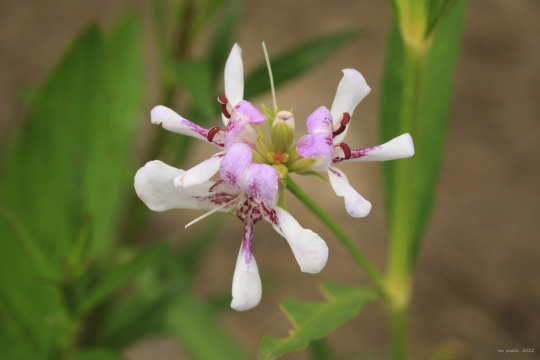
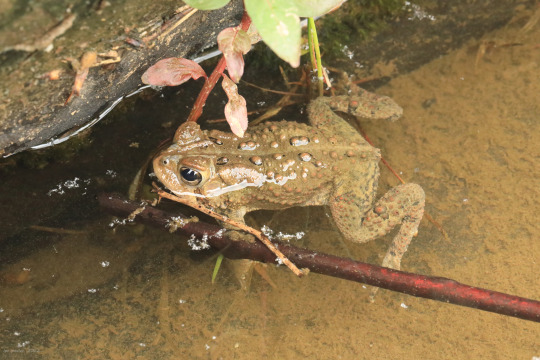
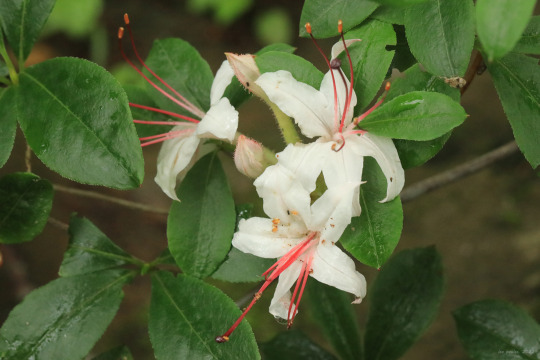



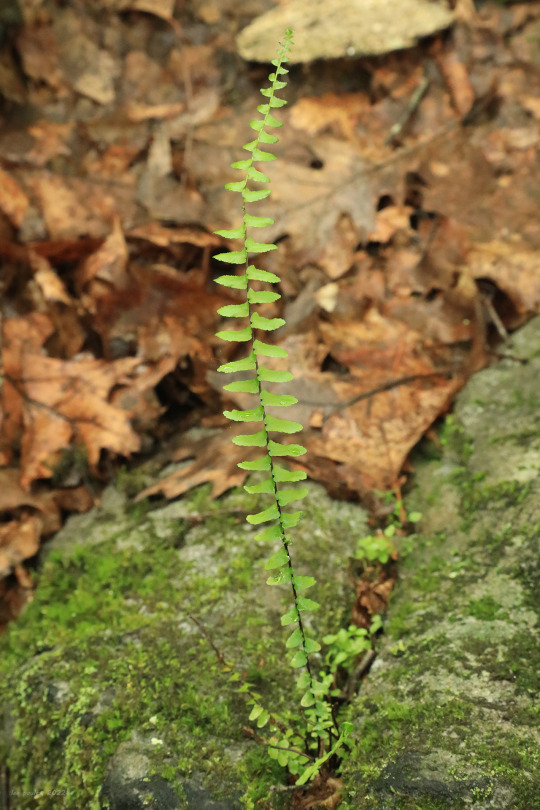
Valley Falls State Park is best known for the dramatic cascades and rapids formed by the Tygart Valley River as it “squeezes” through a narrow gorge on the way to its eventual confluence with the Monongahela River in Fairmont. The park was once the site of a grist mill in the mid-1800s, but the only evidence remaining today is a spillway, a grinding stone, and an abandoned quarry, now overtaken by forest. Falls notwithstanding, I’m ever in awe of the massive slabs of Upper Connoquenessing sandstone piled up on either side of the river - they provide both a testament to earth’s prehistoric past and an amazing riparian zone of rocky pools and sandy embankments where seeds from farther upstream can deposit and take root, providing homes to many uniquely-adapted species.
From top: American water willow (Justicia americana), a showy aquatic perennial that forms large colonies in the shallow riffles of streams; an eastern American toad (Anaxyrus americanus americanus), which was busy croaking and making babies in a rocky pool near the falls; sweet azalea (Rhododendron arborescens), also known as smooth azalea, a rangy, stream-loving shrub whose strongly-scented, white flowers have distinctive red stamens; yellow star grass (Hypoxis hirsuta), an exquisite riparian member of the lily family that clumps on the moist, sandy banks of fast-moving streams; royal fern (Osmunda regalis), a spectacularly beautiful fern that loves the nooks between the boulders at the river’s edge; and ebony spleenwort (Asplenium platyneuron), also known as brownstem spleenwort, an elegant, upright fern with a special fondness for the same rocky nooks.
#appalachia#vandalia#west virginia#tygart valley river#valley falls state park#waterfalls#rapids#riparian#connoquenessing sandstone#geology#spring#wildflowers#flora#amphibian#toad#anaxyrus americanus#american toad#justicia americana#american water willow#rhododendron arborescens#sweet azalea#smooth azalea#hypoxis hirsuta#yellow star grass#osmunda regalis#royal fern#asplenium platyneuron#ebony spleenwort#brownstem spleenwort
172 notes
·
View notes
Conversation
the signs as things my ap world history teacher/environmental club sponsor has said
Aries: *Talking about some ebony spleenwort we found in the wild* Don't step on our lovely Ebony over here...She's beautiful and tiny.
Taurus: And here we have the taoism of Pooh....Not that kind of poo.
Gemini: She's humble...like a potato.
Cancer: Let's get metrosexual up in here.
Leo: Don't overuse the teats, those are for the customers.
Virgo: I'm a peaceful little gorilla.
Libra: Mmmm, cultural diffusion...I eat that stuff up.
Scorpio: Without my beard, who am I but a sad, plant-loving man?
Sagittarius: *When I brought a $20 bill for a $15 Environmental Club shirt* Aw.....Uh, I don't have $5 on me right now but listen, I'll cut you a deal...I can hook you up with a TON of stickers, I'm talking a TON.
Capricorn: Just show me little animals and I'll cry.
Aquarius: God, look at me, I can't go to jail, I'm too pretty.
Pisces: We're all just a bunch of Satan-worshipping AP readers.
10 notes
·
View notes
Text


No idea what type of bug this is but he looks cool. The fern is an Ebony Spleenwort
1 note
·
View note
Text
Virginia Creeper Seedling in my Ebony Spleenwort Fern
Virginia Creeper Seedling in my Ebony Spleenwort Fern
There’s a Virginia creeper (Parthenocissus quinquefolia) seedling creeping up toward the light in my spleenwort fern (Asplenium platyneuron) container. I watched it for a few days with a suspicious eye as it unfurled, because I thought it might be a poison ivy.
Virginia Creeper
This isn’t one of my favorite plants. I’m only fascinated with it because I’ve never seen the creeper at this stage…
View On WordPress
0 notes
Photo

Smaller Ebony Spleenwort, asplenium parvulum - high resolution image from old book.
0 notes
Text
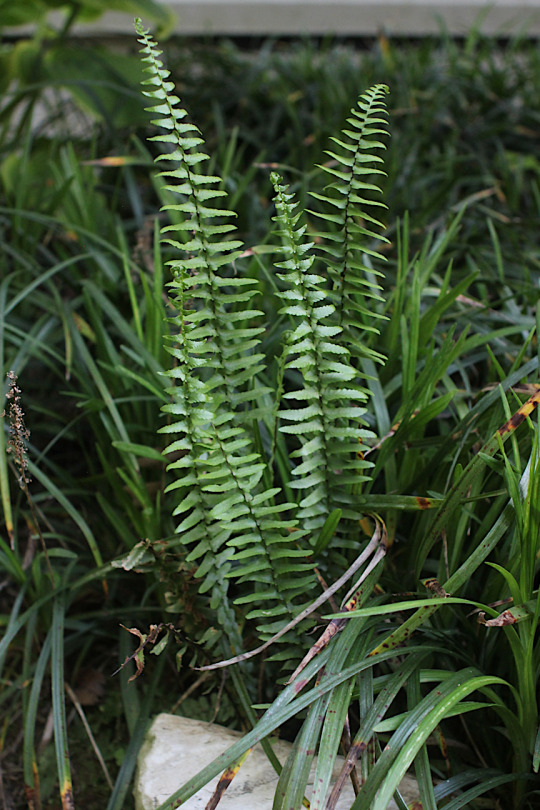
Here is the volunteer Ebony Spleenwort (Asplenium platyneuron) that established itself by the hostas a few years ago (at the bottom of the photo: the protective rock I placed by it to protect it from enthusiastic weed trimming)
Ebony Spleenwort is a fun name huh
12 notes
·
View notes